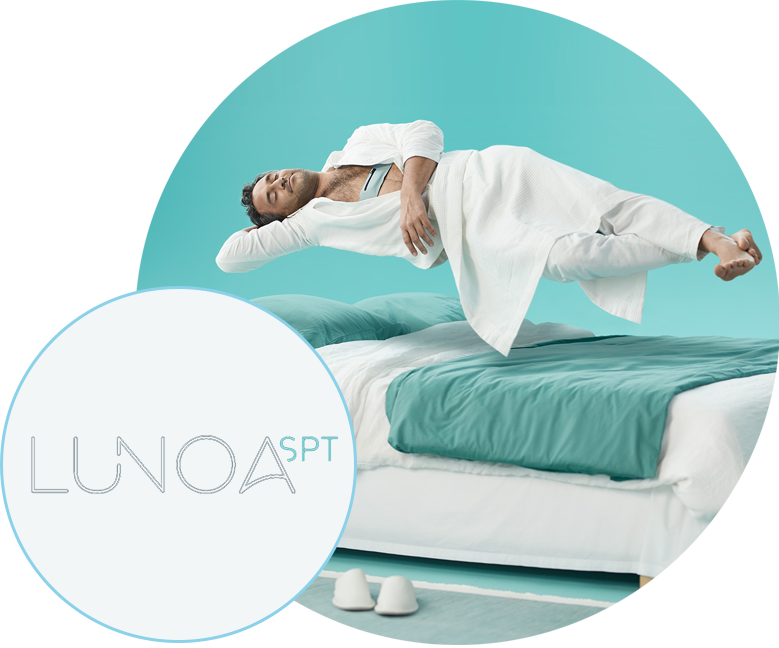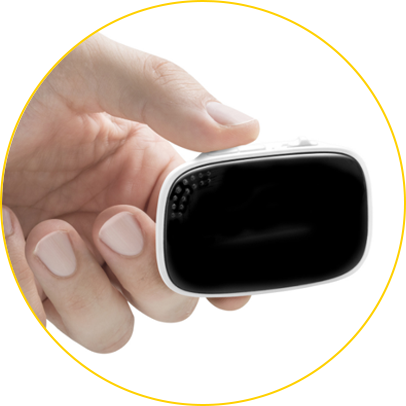
S3 Connected Health’s expertise in wireless connectivity, software development, SaMD, IoMT, medical device regulations, and data security were sought to support the development of NightBalance Lunoa, an EU CE Class IIa and FDA Class II medical device.
In compliance with 60601 Medical Electrical Equipment and Systems and 62304 Medical Device Software standards, we designed and developed a next-generation sensor device with Bluetooth Low Energy (BLE) connectivity, including electronics (PCBA), firmware, mobile application for iOS and Android, and cloud-based portal.
This project required the multidisciplinary expertise of S3 Connected Health’s hardware engineers, firmware engineers, software engineers, quality assurance engineers, web developers, security experts, and systems analysts.
They quickly and efficiently added secure wireless connectivity into a small, power-constrained medical device and developed a secure mobile app to communicate with the cloud-based portal.

The palm-sized sensor device is at the core of the NightBalance system. A built-in adaptation program slowly trains patients to respond to vibrations during sleep and helps gradually adjust them to wearing and being treated by the device.
The sensor device gathers and transmits data on sleep patterns to a companion mobile app and portal through BLE connectivity.
Synchronization of therapy data between the sensor device and smartphone app takes place automatically; directly after turning the sensor device ON or OFF during daily use. S3 Connected Health redesigned the device hardware, adding a BLE module to enable this connectivity.

A mobile application for iOS and Android, targeted to cover more than 87% of the devices, was developed for NightBalance. The mobile app has been designed with ease of use in mind and to make treatment progress easy to see. Data transferred to the mobile app is securely stored and forwarded to a web portal.
BLE connectivity facilitates the transfer of data to the mobile app. The device only needs to be paired to the mobile app via BLE the first time it’s used. After that, the device will automatically connect and transfer data once the app is running. This improves the overall UX of the system and encourages continued use.
A cloud-based online portal was developed to display therapy data on sleep patterns and adherence. Through the portal, patients can share data with physicians when necessary.

S3 Connected Health secured patient data during rest and transition on each system component: device, mobile app, and portal.
The web portal – designed according to Open Web Application Security Project (OWASP) guidelines – enables secured consent for sharing data to third parties and physicians, in compliance with GDPR and HIPAA regulations.
Secure over-the-air firmware updates for the device are now facilitated via the mobile app.
The device has successfully passed through classification in the USA, Europe, and Australasia; it can now be prescribed by physicians to patients with positional OSA.
The mobile app and portal display therapy progress and sleep data, which allows patients and physicians to easily track progress. Adherence with NightBalance is significantly higher than PAP in patients diagnosed with positional OSA.
 More than 70%
More than 70%
of people using NightBalance reported a long-term improvement in the three most common positional OSA symptoms, including:
Non-refreshing sleep
Fatigue
Episodes of breathing cessations, gasping, and/or choking during the night
Sign up to our newsletter and marketing communications to be the first to receive our latest news, events and resources. You may unsubscribe from these communications any time. For more information, check out our Privacy Policy.
Copyright © 2016 - 2025 Silicon & Software Systems Ltd.